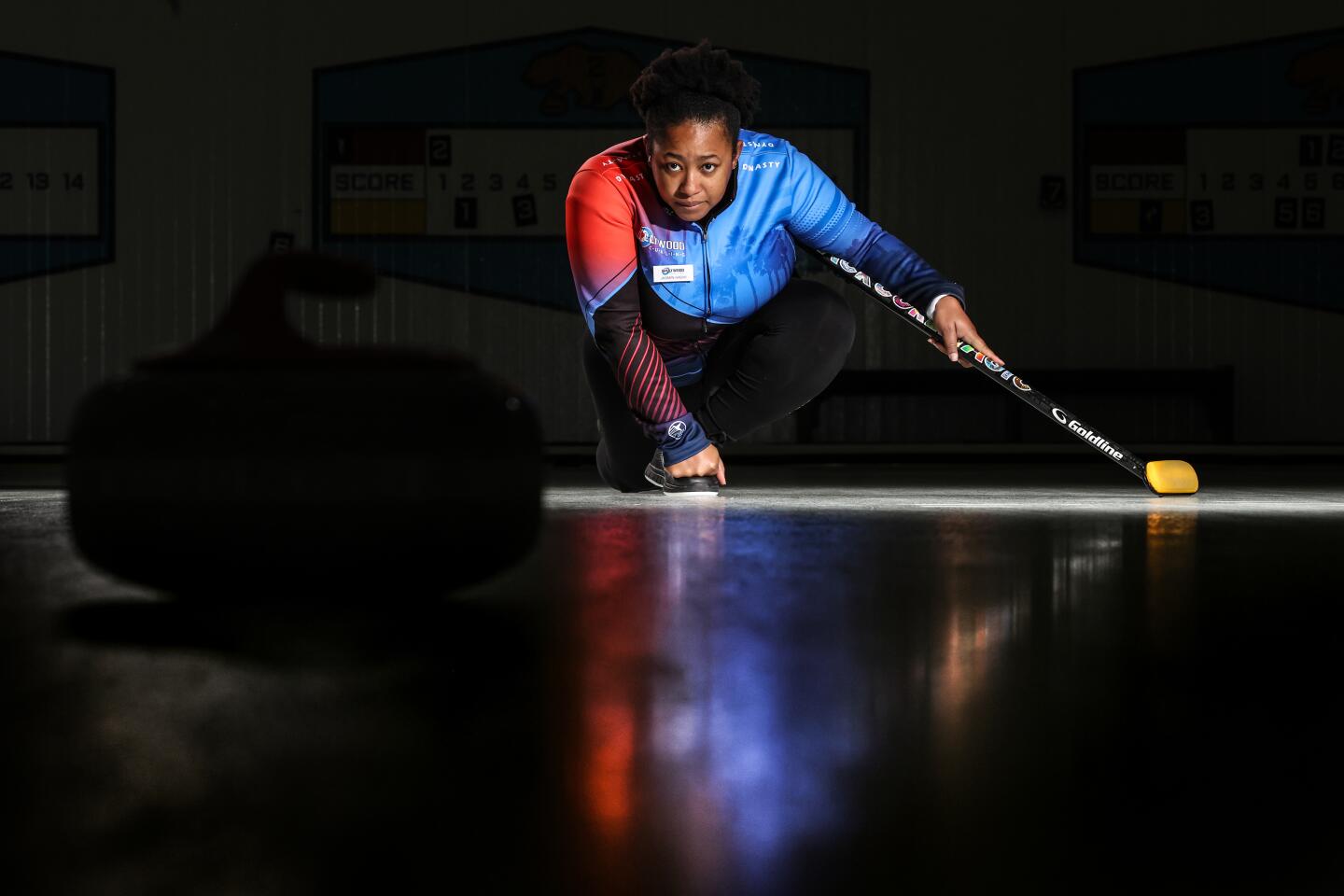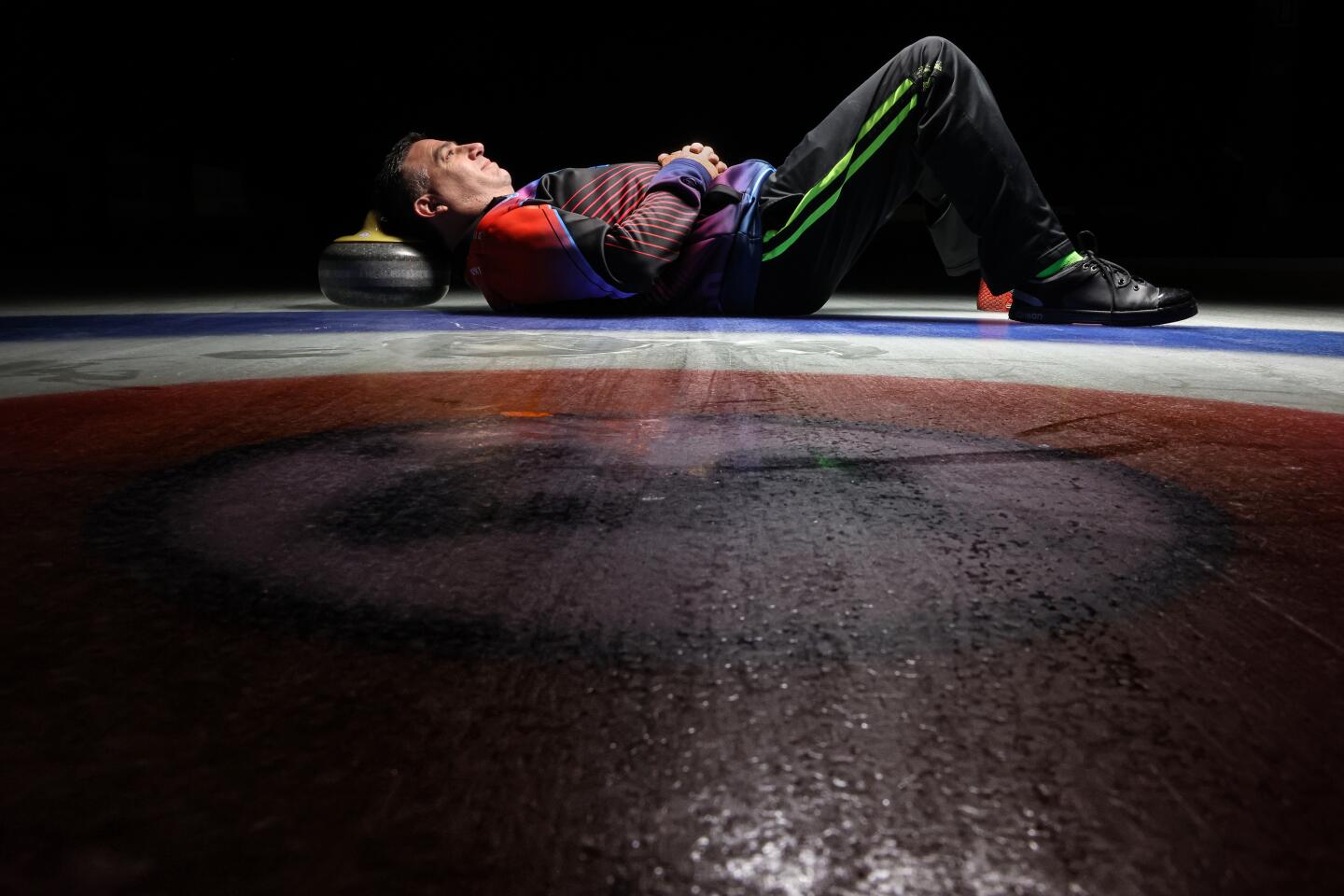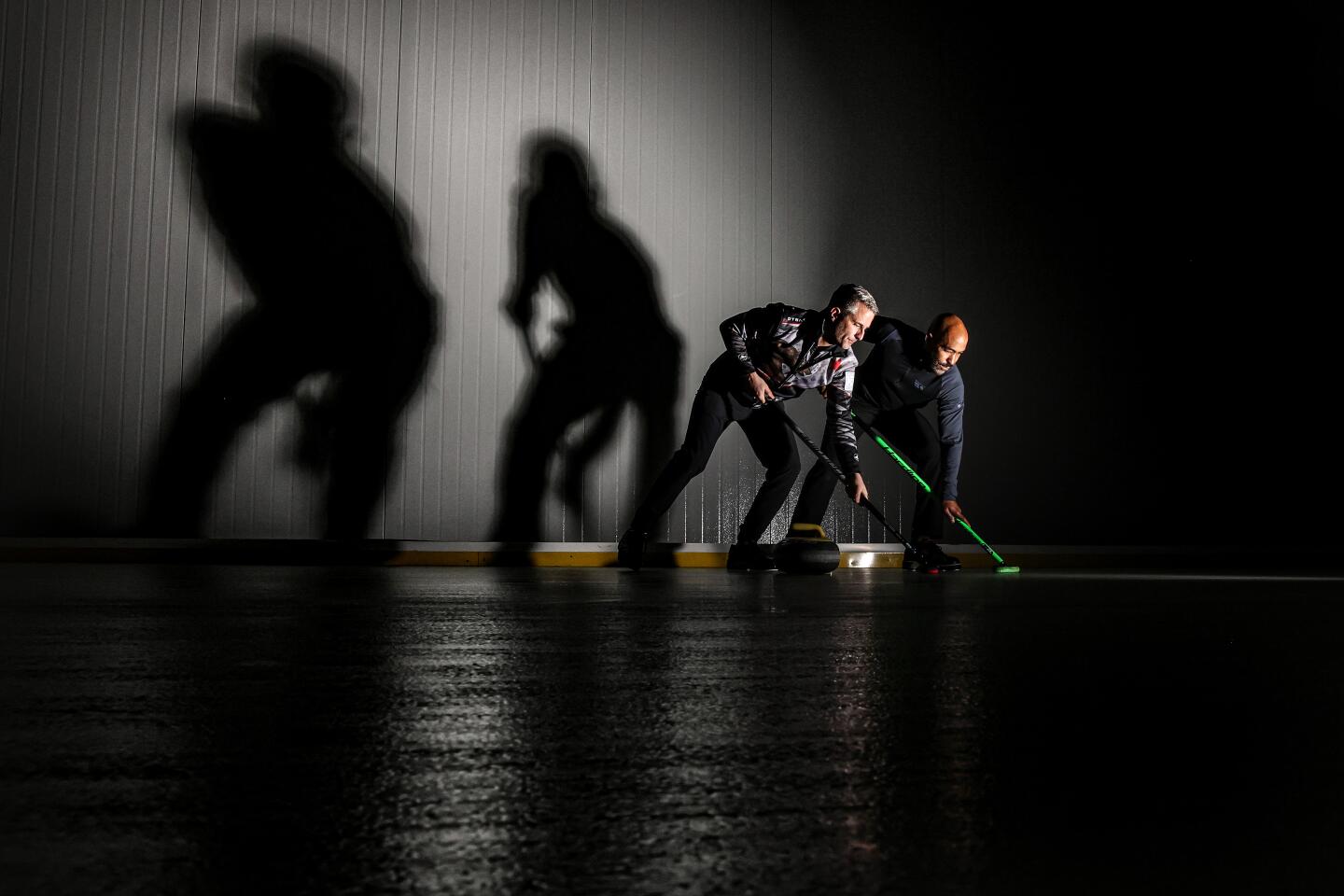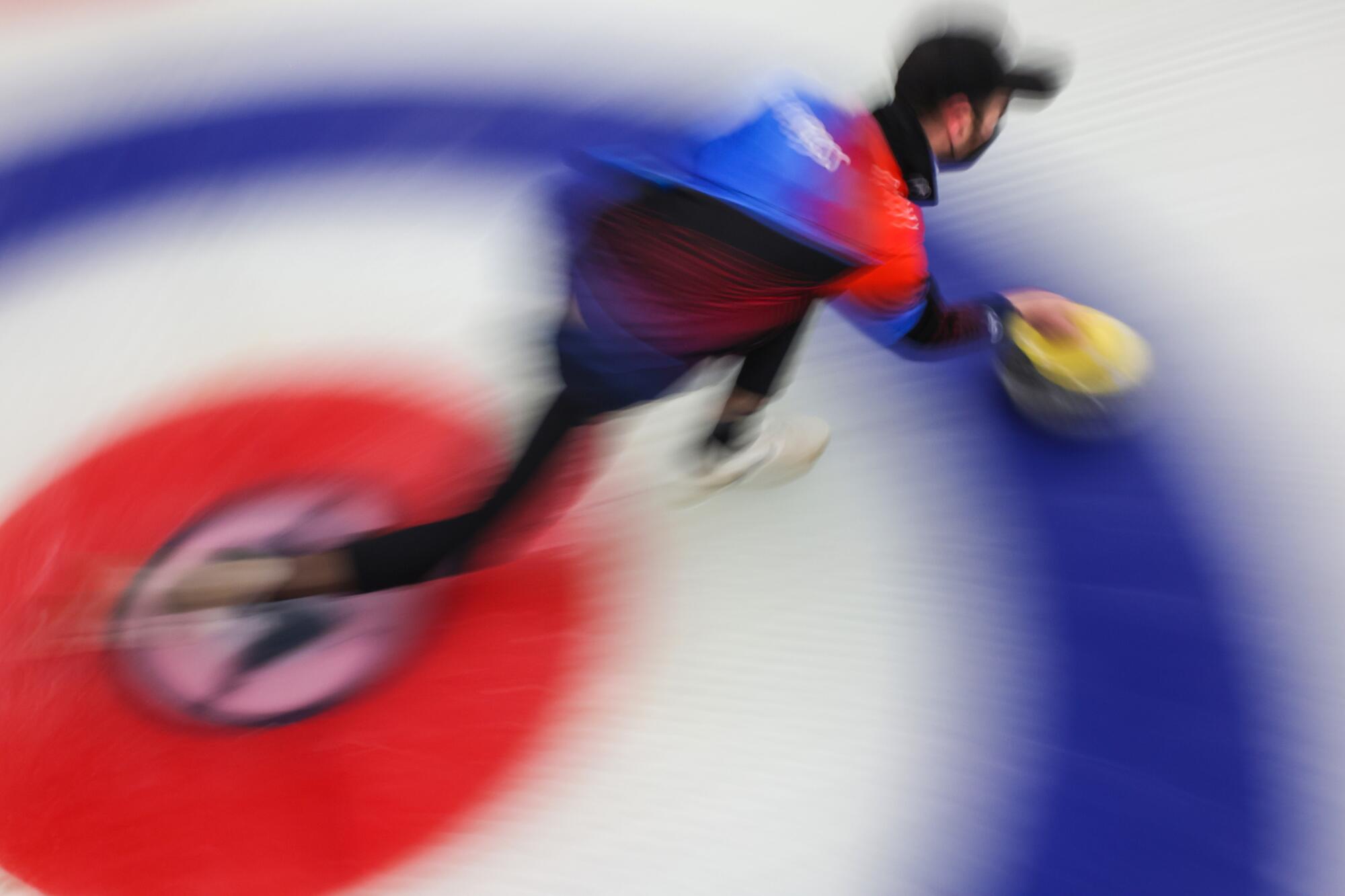
- Share via
Tucked in the shadows of Vernon, home to king-size warehouses and smoke-belching factories that produce hot dogs, hot sauce and hot pants, is a place aspiring to be the coolest hang in Los Angeles.
Thirty-two degrees cool.
Like Moose Jaw, Canada, or Bemidji, Minn. — and, these days, Beijing — L.A. is now a hot spot for curling.
Every four years, when the Winter Olympics come around, TV viewers stop and notice men and women in funny-looking pants furiously sweeping in front of what looks like a giant teakettle sliding on ice. And many wonder: Couldn’t I do that?
In the land of the Dodgers and Rams, the answer is sometimes yes, and it’s a diverse group that assembles at the Southern California Curling Center. Like many in California, a good number are transplants from other states and countries. They compete in leagues and bonspiels (tournaments), but most agree that curling’s ethos is what keeps them coming.
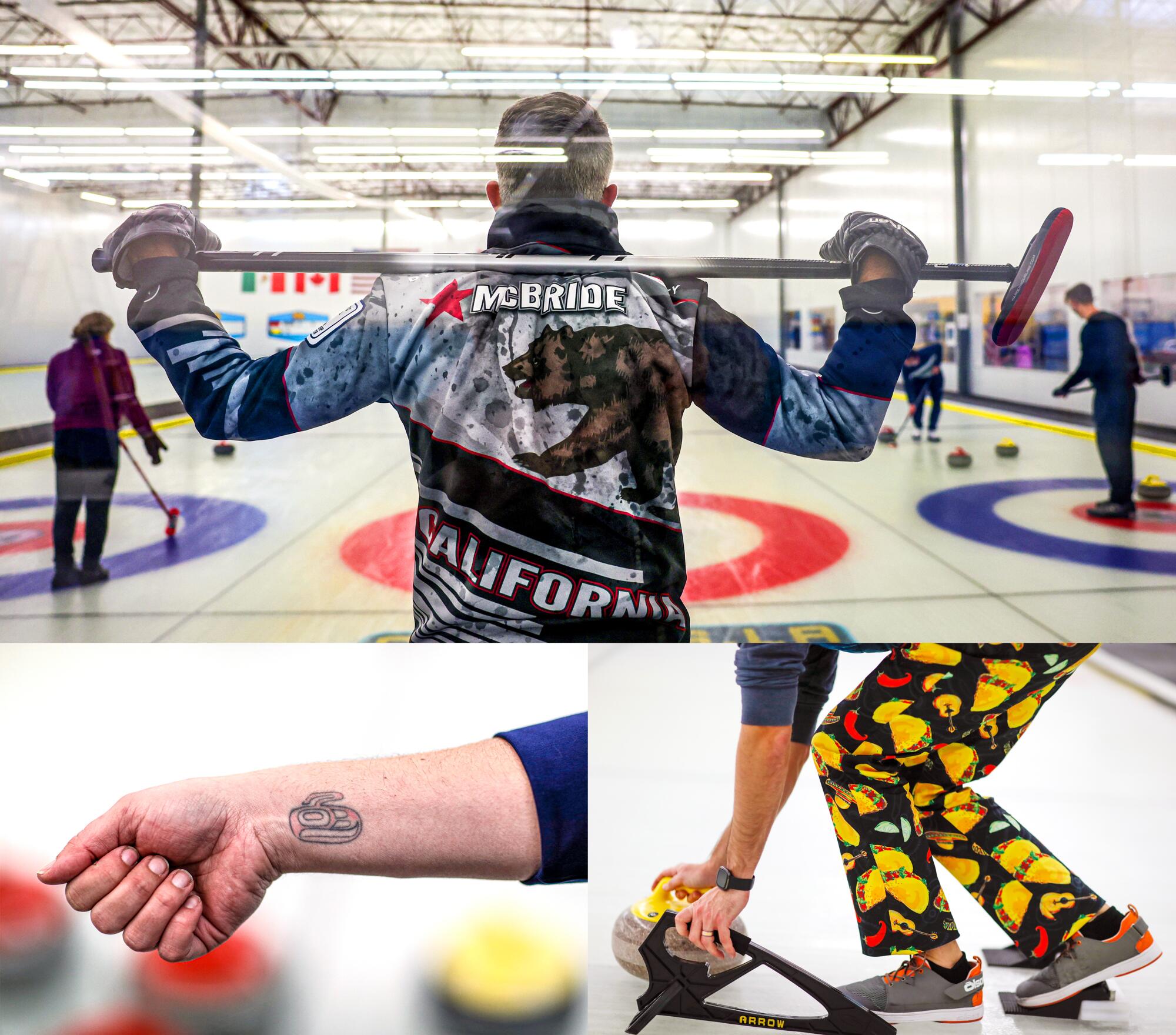
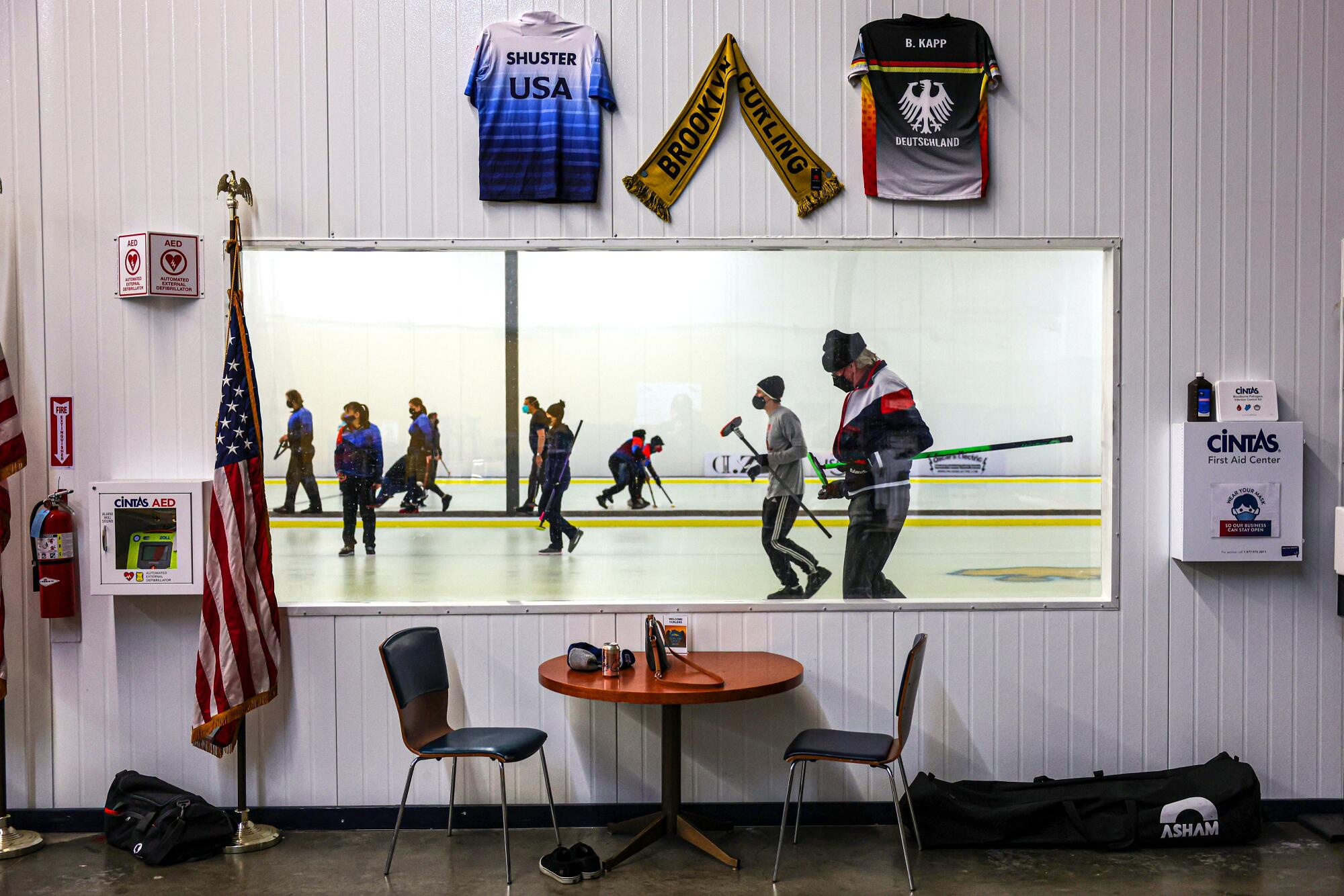
“When I’m curling, it’s in my body and my soul,” said Jasmin Hashi, 34, a member of the Hollywood Curling Club. “I have this internal rumble that sounds like a curling stone gliding over pebbled ice.”
Often referred to as “chess on ice,” curling has a simple premise: Curlers try to place their stones closer to the center of a 12-foot-wide scoring circle than their opponents do. The game, which originated in ancient Scotland, has evolved a unique culture and language.
“There’s a lot of folksy language that makes it fun,” said Matt Gamboa, co-owner of Southern California Curling. “Americans have the Midwestern sensibility and Canadians are, of course, Canadian.”
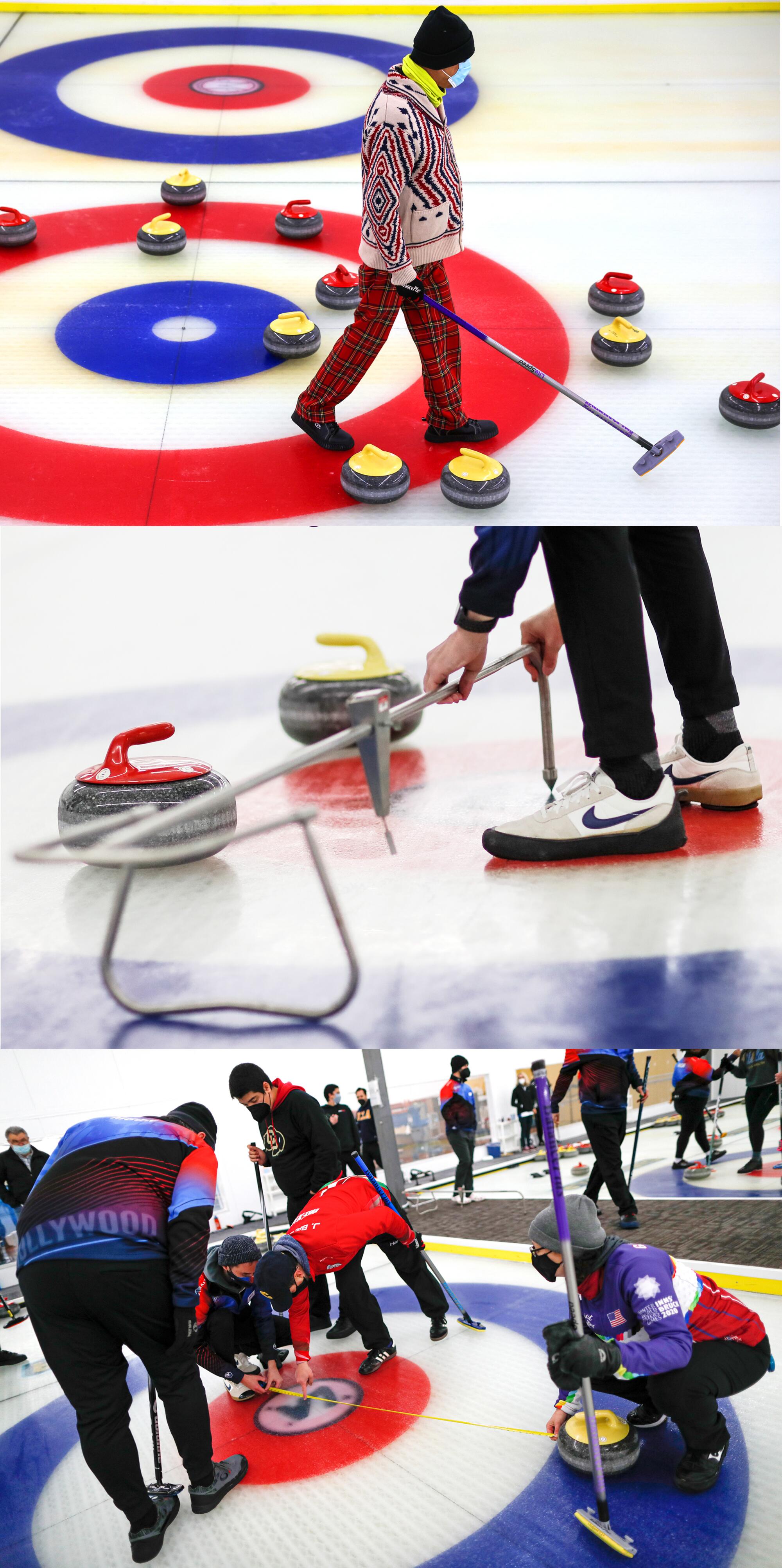
The Mexican Curling Federation, or La Federación Mexicana de Curling, trains at the Vernon center.
“Mexican curlers have taken to calling the grippers we put over our shoes la chancla,” he said.
To the uninitiated, curling talk can indeed sound like a dialect — call it Curlish. And if you don’t quite follow the lingo, you get the drift:
The skip has the hammer down one in the final end and is looking to deliver a stone on the button to sit two.
The ice is swingy, so the vice skip holds her broom inches away from an opponent’s stone in the 8 foot.
It’s keen-ice tonight, the rocks are carrying.
“What’s the weight?” asks the skip of his sweepers.
“Ninety for the lid,” says the second.
The lead agrees. The skip nods.
Eyes fixed on the spot located 126 feet away, the skip pushes off the hack and contorts into a Manitoba tuck, sliding steady and low with his Tiger corn broom in hand, away from the center line, right on broom.
He releases with an in-turn handle, inches before crossing the hog line. Sweepers fixate on the rock, “Gotta go!” says the second as they begin to pound away with their brushes.
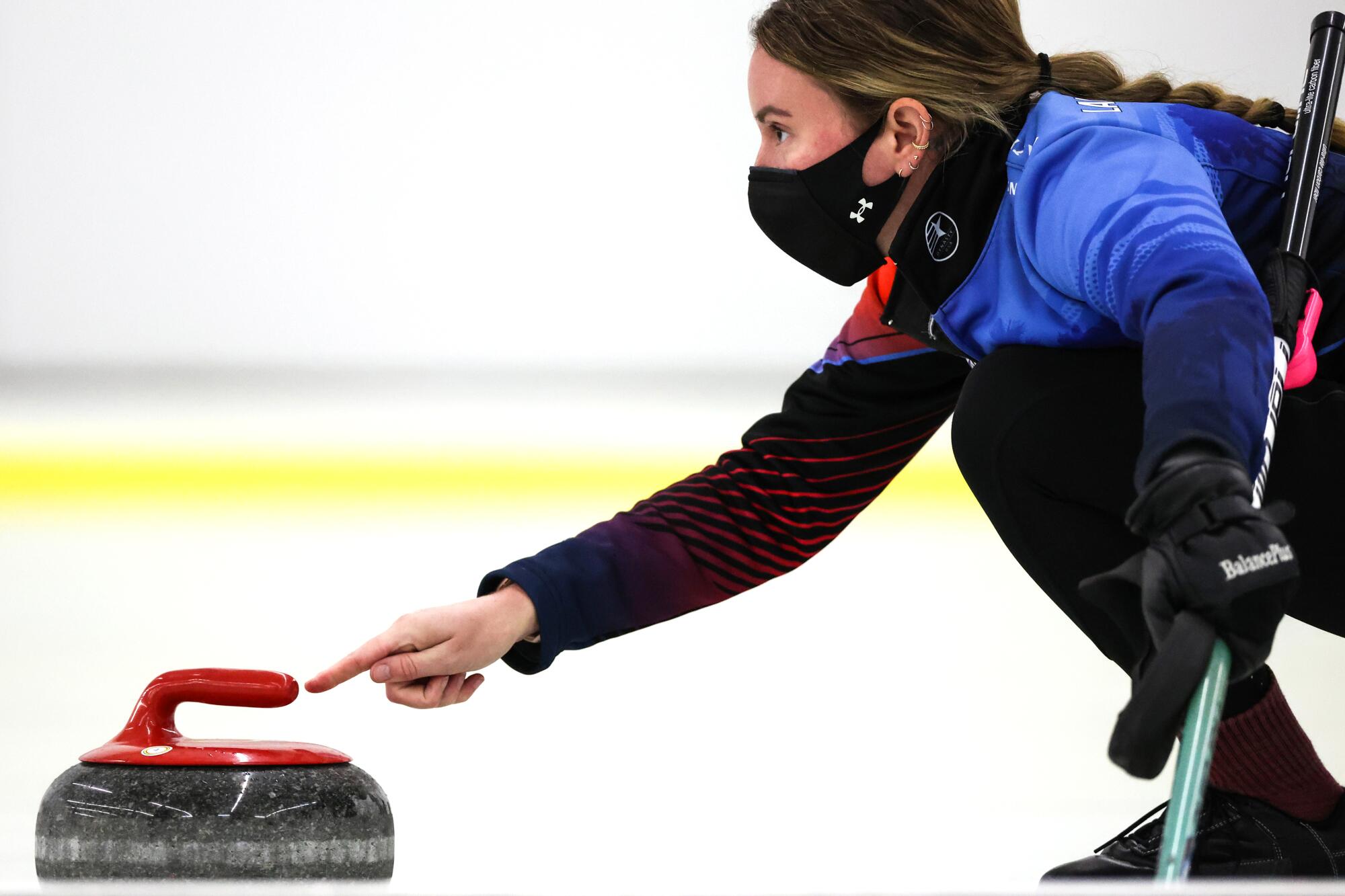
::
The Hollywood Curling Club, a nonprofit for 13 years, is based in the Southern California Curling Center, which is quickly becoming the Western hub for the sport. Opened in August 2021, the center is a 42,000-square-foot converted warehouse featuring six “sheets” of “dedicated ice.”
Curling aficionados say the center is the biggest facility in the Western United States that features dedicated ice and sheets built and maintained exclusively for curling. The center provides the stones and hosts leagues, tournaments and corporate events, along with learn-to-curl training sessions.
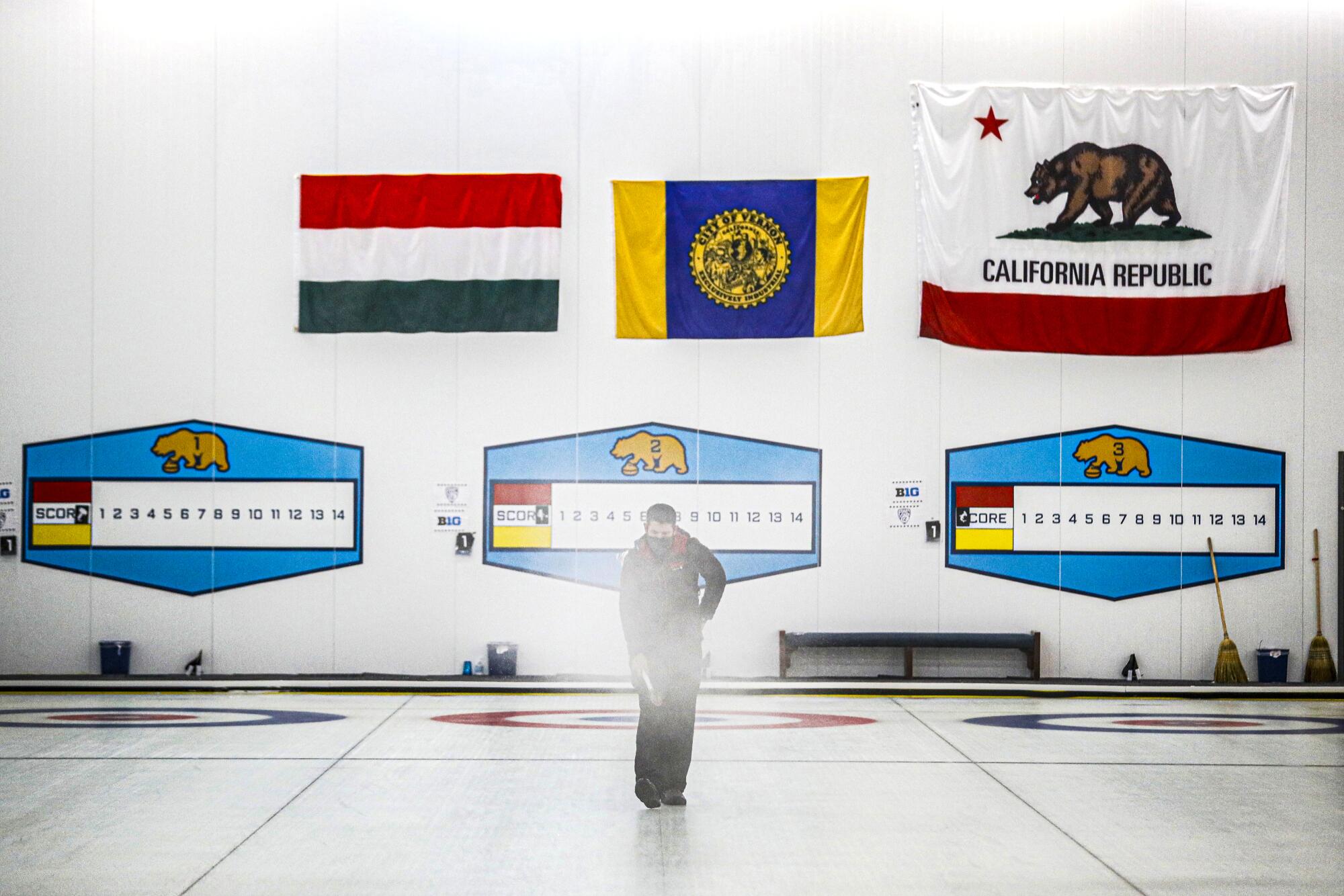
“In L.A. — oh, my gosh — it’s all here,” said Justin McBride, 46, a Southern California transplant from Tillsonburg, Canada. He’s from a family of lifelong curlers and notices that the sport is growing locally with younger, energized club members.
“There are a lot of Canadians jealous of the mind-set and enthusiasm around the sport here,” he said.

“Now that we have the L.A. club, my family can’t wait to come back out here for a bonspiel. Curl a little bit, then go to the beach a little bit.”
McBride’s husband, Derek King, a 43-year-old banker, is a native Angeleno and avid curler.
As teenagers in Baldwin Hills, King and his friends would spend their time at the Culver City ice rink. “We were on the ice every Friday.” he recalled. “Skating, hanging out. Hockey and figure skating were popular. Curling — not so much.”
King said he and friends first noticed curling while watching the Vancouver Olympics in 2010. “It almost seemed like lawn bowling to us. Nobody knew what it was,” he said.
“People from L.A. don’t curl.”
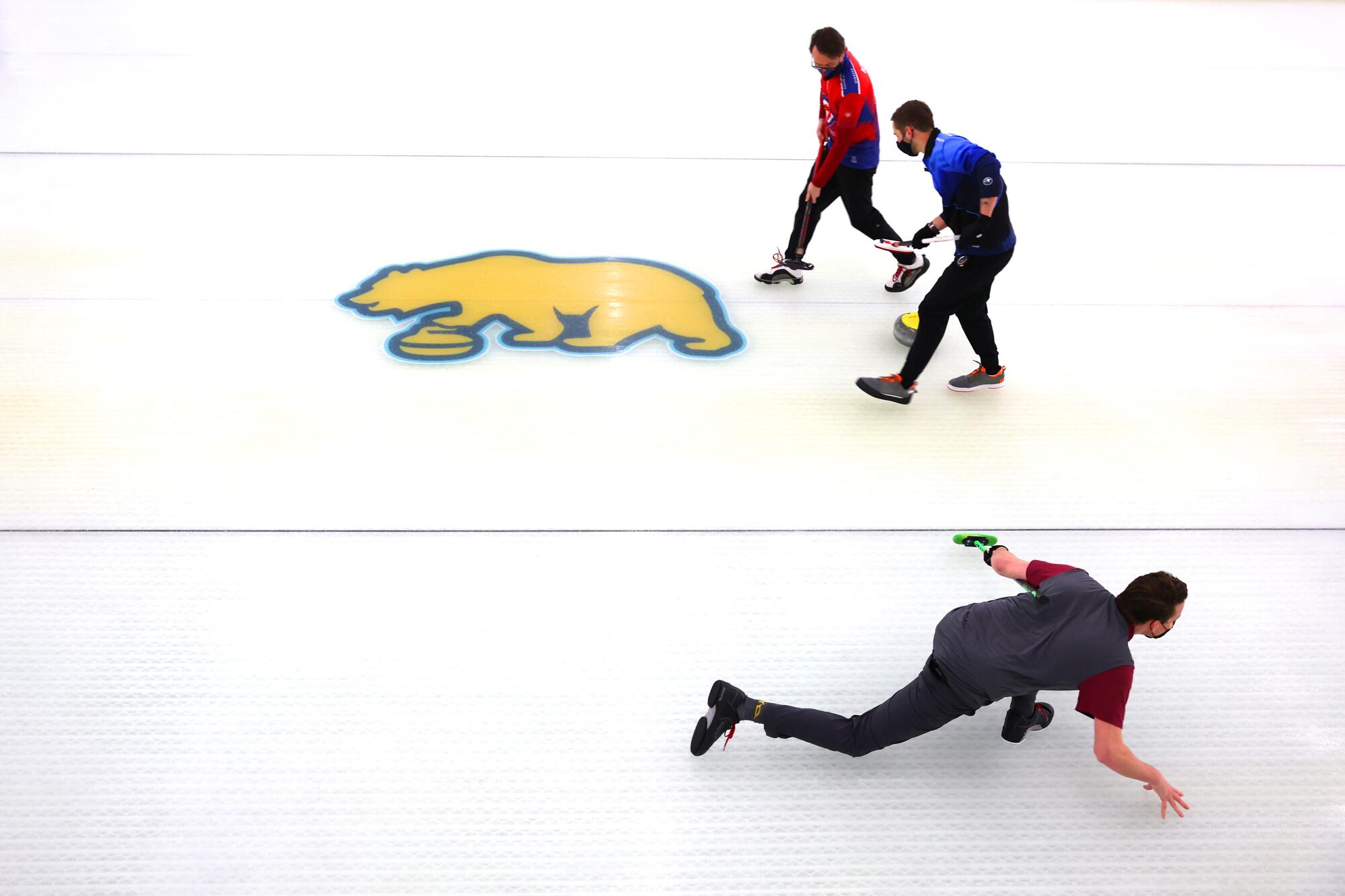
Not quite. King learned the sport when McBride, a longtime friend, invited him and other friends to give it a try in 2015. From then on, he was hooked. Both on curling and McBride. They married in 2018.
McBride and King, now residents of Anaheim, team up on league nights and travel the world, planning vacations around bonspiels in Canada and Europe. McBride often travels without King to tournaments with a competitive team. King sticks to the local league, where he’d rather socialize than win.
“We have different aspirations when it comes to curling,” King said. “Justin is absolutely the competitive curler, and I curl for the fun — and drinks.”

Part of the appeal, he added, is the mix of people — “fun-loving, normal people” — drawn to the ice.
“You’ve got ballet dancers, you’ve got computer technicians,” he said. “You’ve got grocery store workers. You’ve got college students. You literally have a whole gambit of people that curl.”
Hashi, a film industry animation executive, also savors the camaraderie, along with the competition. She recently moved from Seattle to pursue her dream of becoming an Olympic-caliber curler.
“Curling gives me the opportunity to compete and play a team sport and be a member of probably one of the greatest groups of people,” she said. “The spirit of curling is unique. There’s a system of honesty, integrity and competition followed by camaraderie. These aren’t your opponents. This is your family.”
And it’s a family that’s so very Californian, as captured by the center’s emblem: a grizzly bear launching a stone, a palm tree in the background.
::
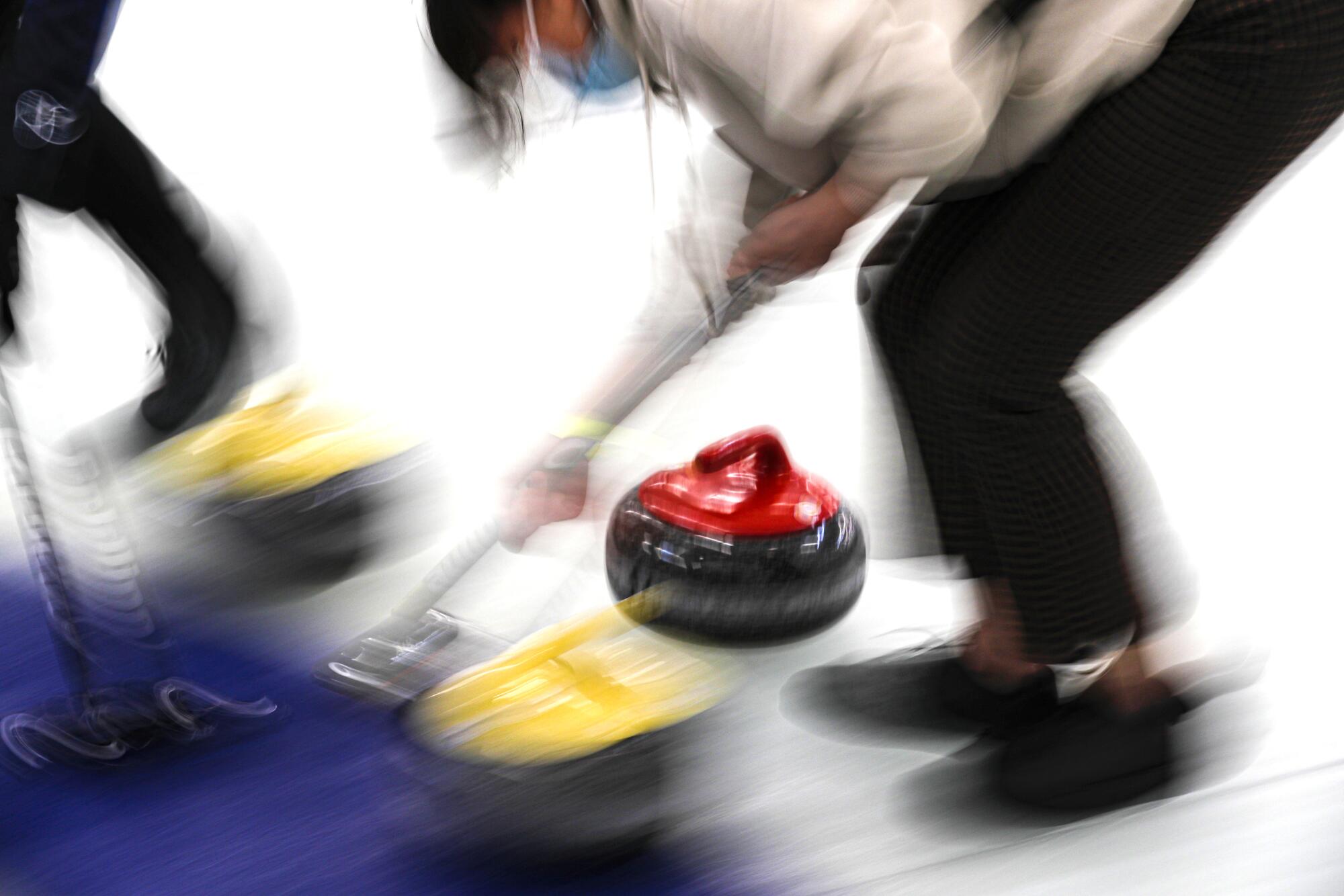
The 42-pound stone glides on pebbled ice escorted by two sweepers who brush hard all the way to the house.
“Hurry!” barks the skip.
“Hard for line!” shouts the vice.
Avoiding the guards, the stone slows in the top 12.
“Hard!” he yells.
::
Lynn Taylor, 65, a retired computer engineer who once worked on the space shuttle, drives from his home in the mountain town of Wrightwood down to Vernon at least twice a week. That’s 156 miles each round trip. “Two gallons to get to the club. Three gallons to get home,” he said.
The best thing about curling, he said, is the culture, no matter where the stones are sliding. “I’ve curled in L.A., I’ve curled in Portland and I’ve curled in Minnesota. I will be on the ice in Wisconsin the end of next month.”
“You walk into a curling club and it’s like family,” Taylor said. “The game has tremendous sportsmanship and courtesy that I really can’t think of any place in our daily lives that even exists anymore. Not just Los Angeles.”
Although people have been curling in Los Angeles since the 1960s, there wasn’t much interest in the sport until it was featured as a new event at the 1998 Olympics in Nagano, Japan. Since 2007, the Hollywood Curling Club has organized leagues, taught curling and hosted tournaments and bonspiels at venues throughout Southern California.
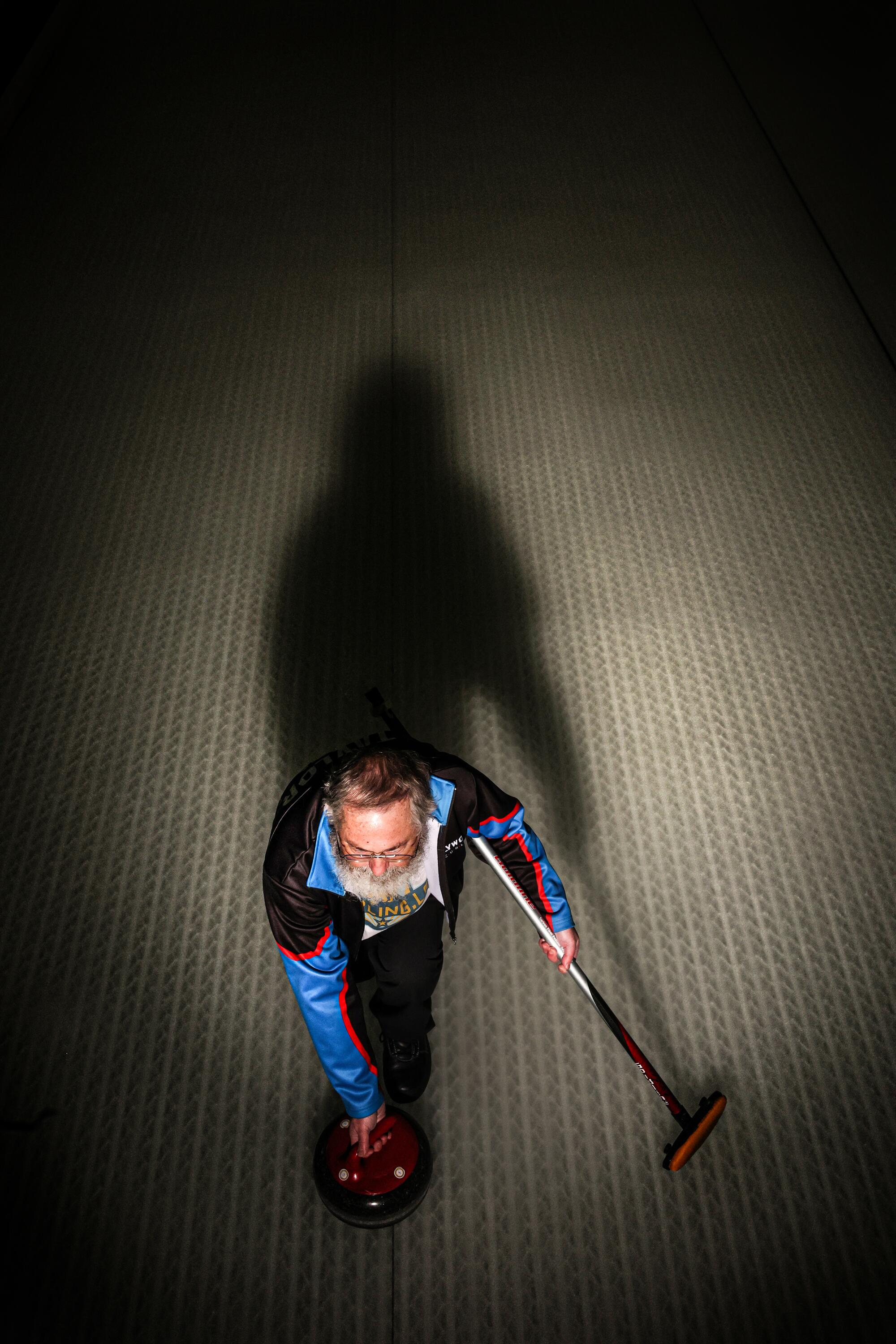
It has found a home inside the Southern California Curling Center. Peter Dohm, a former SpaceX engineer, partnered with Liza Beres, a production manager, and Gamboa, an urban planner, to build a facility in Los Angeles proper but found the process too cumbersome.
Gamboa, an L.A. native who earned a graduate degree in urban planning from the University of Glasgow in Scotland in 2014, is now an L.A. city planner. Thanks to his insights on navigating bureaucracies, Gamboa led the group to Vernon.
Located a few miles south of downtown L.A., the city of Vernon, (5.5 square miles, population 107), has its own government, including Mayor Melissa Ybarra, who aspires to transform the place into something more than just an industrial hub.
“It was easier than other cities,” Gamboa said of their efforts to locate and build the center. “I don’t think you can do this outside Vernon or anywhere nearby.”
Inside, the facility shines with ice-white walls surrounded by hundreds of flags representing countries, states, territories and pride organizations — an intentional nod to curling’s ethos of sportsmanship and inclusion.
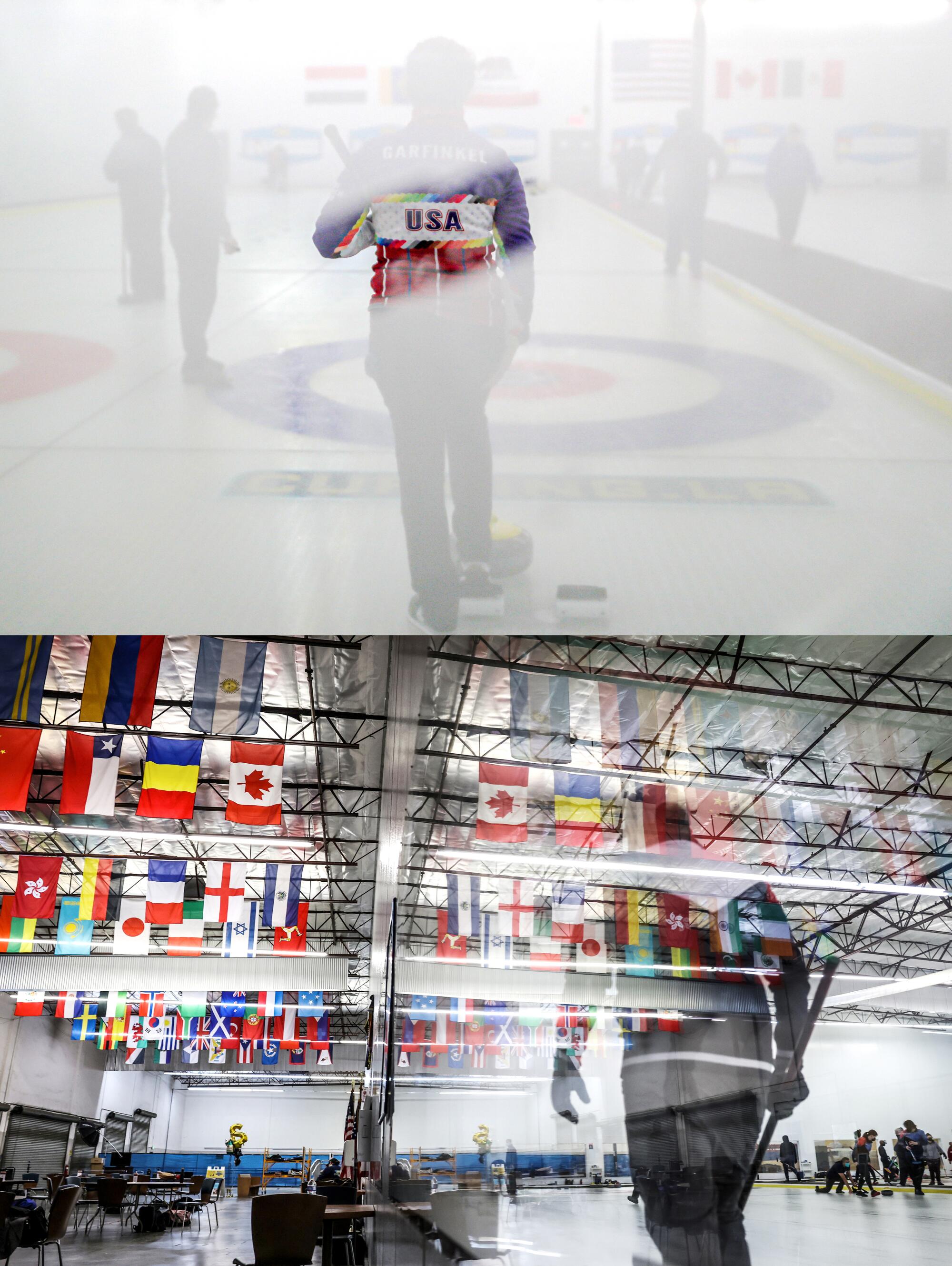
“We wanted it to feel big and inclusive,” he said. “It was our first step to helping people feel welcome who may not be from traditional curling backgrounds.”
“When folks come and see their home flag up, especially ones not widely acknowledged, like Guam and Mariana Islands, they feel seen.”
::
Frantic brooms brush in front of the stone creeping along a good line, through the top 8. It drifts into the top 4, coming to rest on the pin.
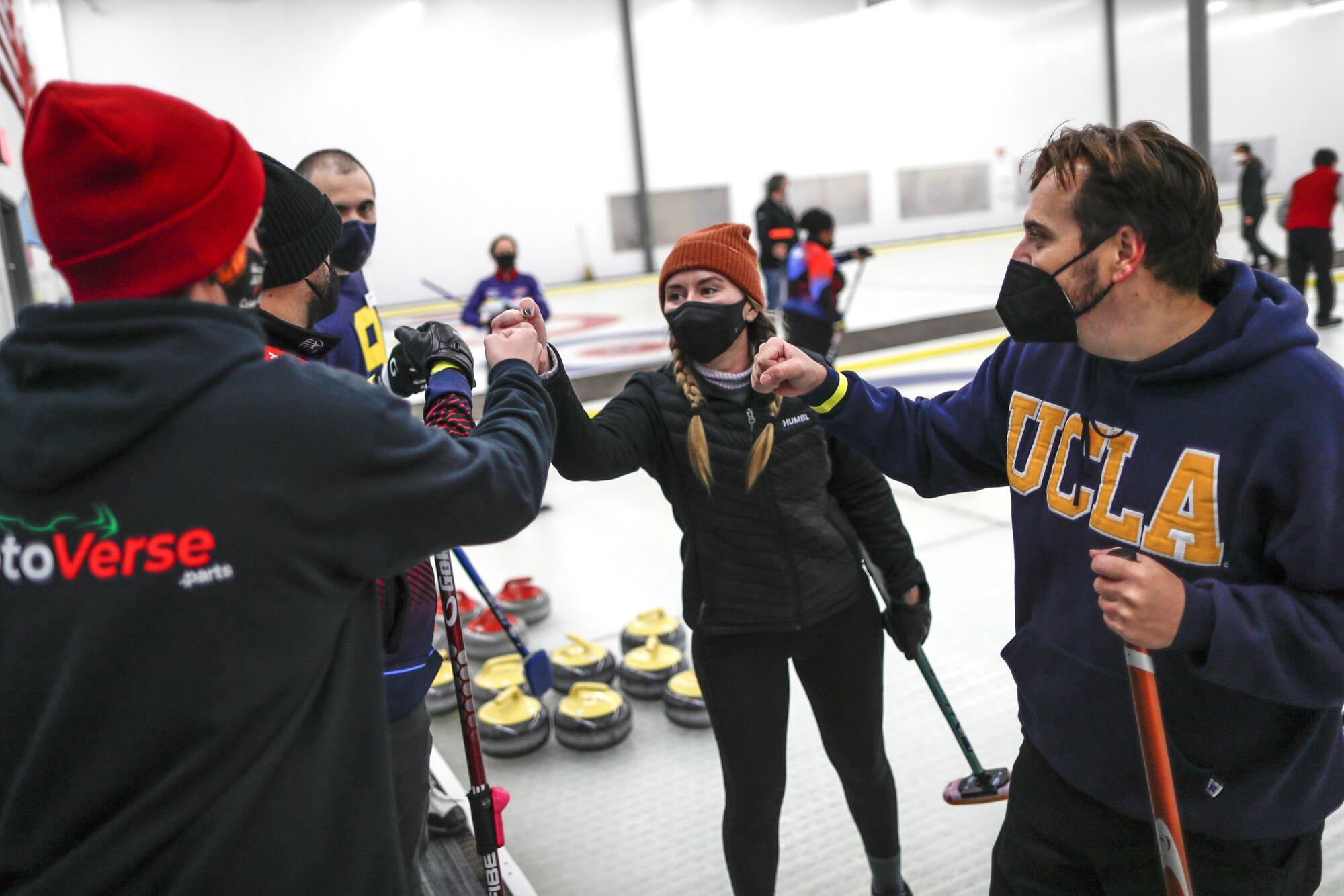
Success. They score a deuce in the final end and win the match.
“Well swept,” says the skip as the team exchanges fist bumps. Just handshakes and smiles.
“Good curling,” they say.
More to Read
Sign up for Essential California
The most important California stories and recommendations in your inbox every morning.
You may occasionally receive promotional content from the Los Angeles Times.
